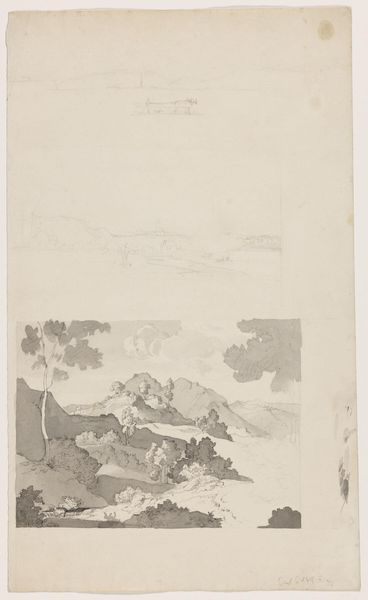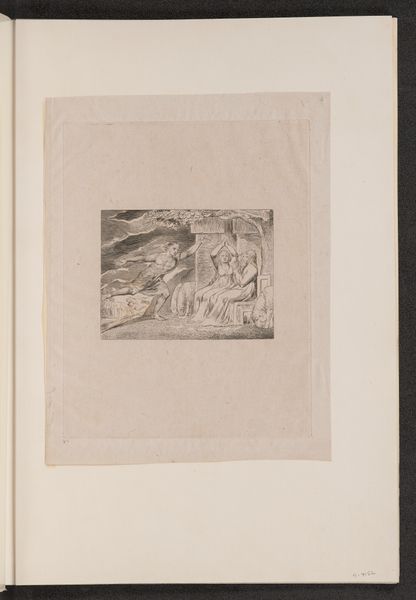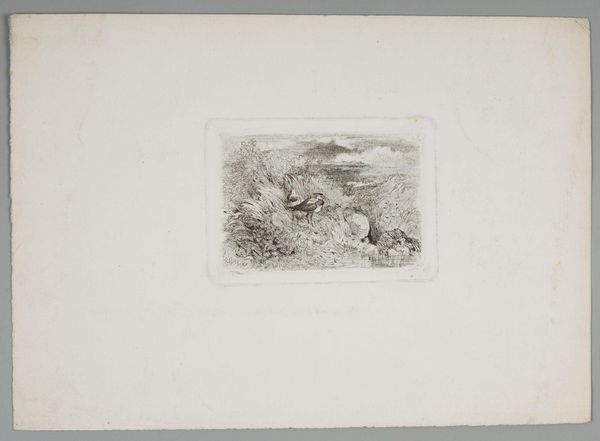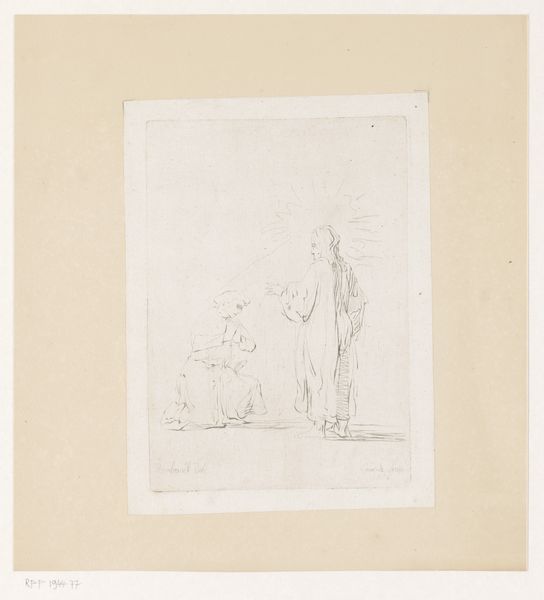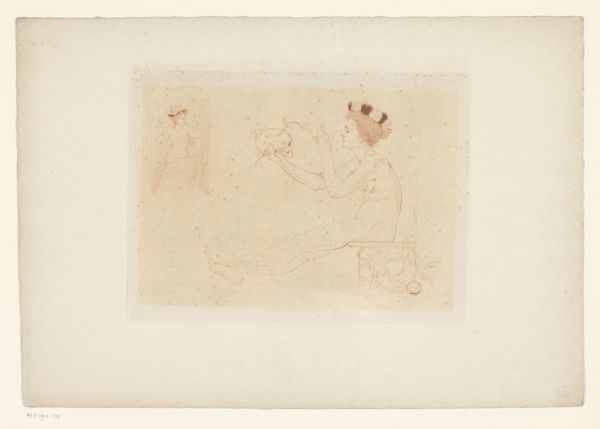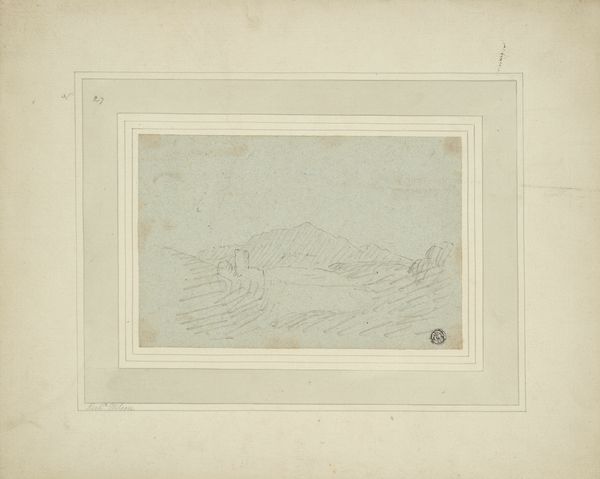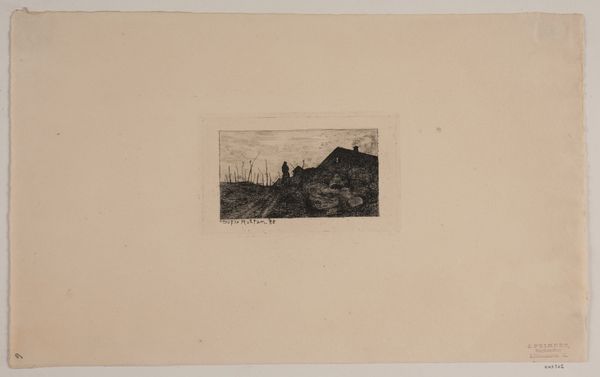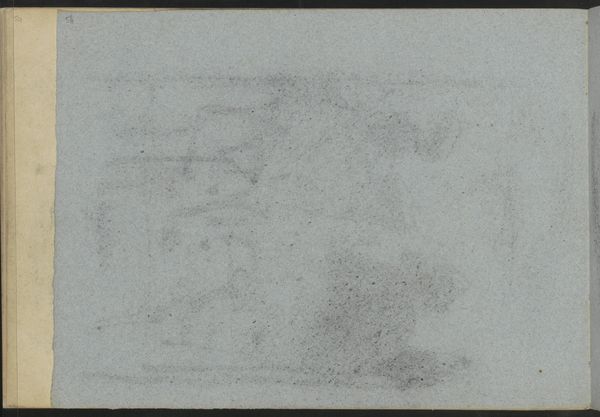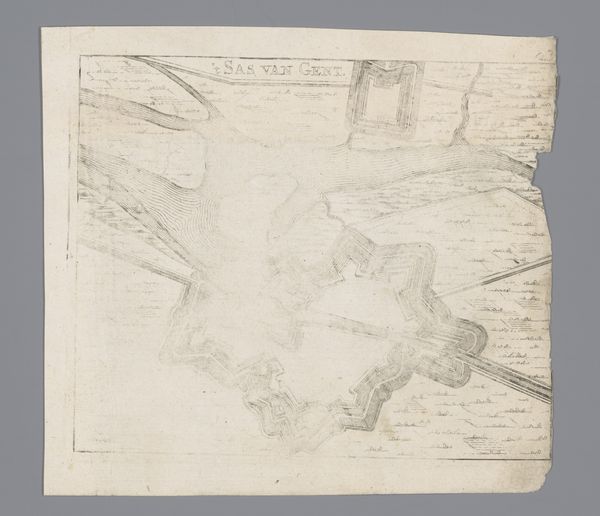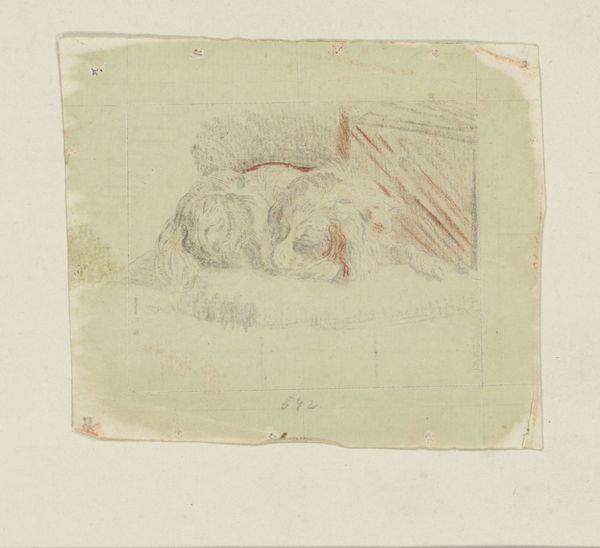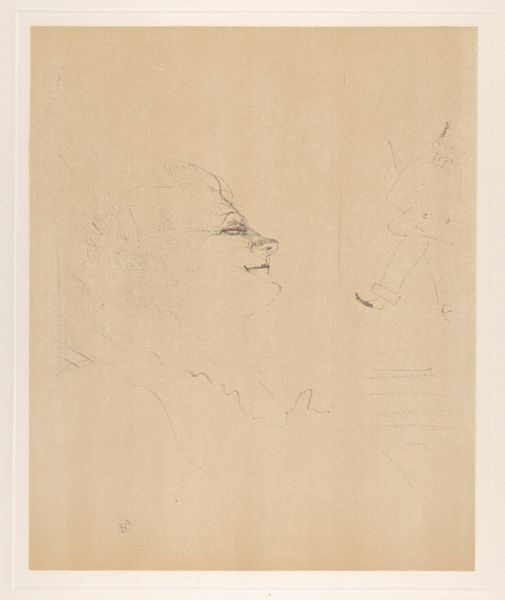
drawing, print, paper, charcoal
#
drawing
# print
#
landscape
#
paper
#
romanticism
#
charcoal
#
watercolor
#
realism
Dimensions: 172 × 267 mm
Copyright: Public Domain
Editor: This is "Rocky Landscape with Standing Figure," an undated drawing by Richard Wilson, held at the Art Institute of Chicago. The wispy charcoal lines and subdued palette evoke a sense of isolation. How do you interpret this work? Curator: Well, let's think about the historical context. Wilson lived during a time of immense social change. The enclosure movements were displacing rural communities, forcing people into burgeoning industrial centers. What might a "romantic" landscape like this mean in that context? Editor: I guess it could be seen as a nostalgic yearning for a disappearing way of life? Curator: Precisely. The lone figure seems dwarfed by the imposing landscape, almost insignificant. Consider this figure not as a celebration of the individual, but perhaps as a representation of the vulnerability and dispossession that many experienced during this era. Does that resonate? Editor: Definitely. I hadn't considered the social implications of landscape art before, particularly within the context of romanticism. Curator: Romanticism wasn't just about pretty scenery. It also engaged with the politics of its time, grappling with themes of loss, identity, and resistance against encroaching industrialization. What does this suggest about power dynamics in that time, in terms of humanity versus nature? Editor: It highlights how deeply intertwined art is with the issues of its time. I am now aware of how the Romantic artistic style interacts with displacement in the landscape. Curator: Indeed! Considering social contexts can radically change our interpretations.
Comments
No comments
Be the first to comment and join the conversation on the ultimate creative platform.

